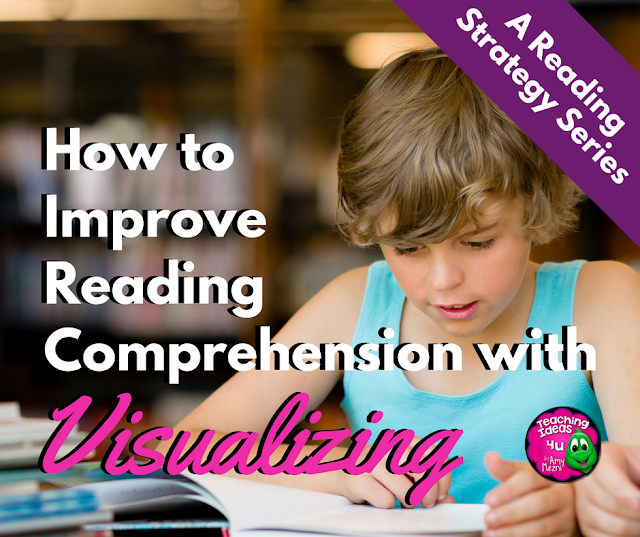How to Use Visualizing to Improve Reading Comprehension
Teaching visualizing as a form of reading comprehension is a skill that should be taught to both beginning and struggling readers. When people visualize what they are reading, they form images of the story in their minds. This skill improves reading comprehension because it teaches readers to use input from all of their sense (sounds, sights, smells, tastes, and touch) to form images about what they are reading. This enables the reader to 'see' the information. When people can see what they are reading, they feel more connected to the passage. Visualization also helps the reader retain the information in the text.
Students may struggle to visualize a story or a passage. It requires synthesizing many skills to create that picture - a reader needs to activate background knowledge, use phonetic abilities, and recall information from the story. It is important to help readers create those mental images, so teachers should model a variety of methods that readers can use to form mental pictures.
Here are a few visualization strategies teachers can model:
1. Start with an Auditory Piece
Remember, reading is hard work - especially if a student struggles with phonics or word recognition. If the goal is to have students understand how to visualize, then start with a piece that might be more accessible to struggling readers: an auditory piece. The teacher could read a poem, paragraph, or nursery rhyme to the class, asking them to draw what they hear. Teacher could also pick a popular song that has a lot of imagery - it is important to select a piece that has a lot of specific details for students to visualize. For example, the song 'The Lion Sleeps Tonight' by the Tokens is a rather simple song, but students could imagine the lion sleeping in the jungle or the nearby village.
2. Listen then Read
Another great strategy is to read a paragraph aloud to students, then give them a minute to draw what they heard. Next, provide each student with the text and have them check their picture with the text. Students should highlight or underline parts of the text that support their image.
3. Practice on Short Pieces of Text
In this step, students should read the text on their own. As students learn how to visualize, use small pieces of text to help them practice - a long chapter might be too much information for them to remember. Nursery rhymes can be good introductory texts, especially if students are familiar with them. Poems could also be a good choice, as long as teachers select a poem that is more concrete in its meaning and has specific details.
4. Focus on a Specific Element
Another strategy to help students is to have them focus on a specific story element. Use mentor texts that have strong characters or settings, then ask students to draw that particular element based on the passage. For older students, a teacher could select a paragraph or section of a book that has a lot of description about the setting, character, etc. Scholastic has a good list of books with strong characters for different reading levels.
5. Nonfiction Texts
Visualization can help increase reading comprehension of nonfiction passages. When assigned a text in social studies or science, students should visualize what is taking place in the reading. For example, if the passage is about clothing styles in the Colonial period, the teacher can ask students to draw images of the different pieces of clothing. By illustrating how they visualize the information on Colonial clothing, students will feel more connected to what they learned while demonstrating that they actually understood the text. (Note: Keep in mind that not all students enjoy drawing. Some students may draw rough pictures but choose to label the details.)Visualization is most often taught in primary grades. However, upper grade teachers working with struggling readers should check to see how well students can visualize information in a text. For many students with processing issues, it can be very difficult for them to move information from short-term to long-term memory. Creating mental images might help those students retain what they read. Other struggling readers might focus so much on decoding words that they miss the meaning of the text. As visualization is a skill that is usually developed in beginning readers, difficulty visualizing in older students may be a red flag for teachers to investigate further. The student may just need more practice, but he or she might also have a undiagnosed learning issue.
If you are interested in having some prepared activities for teaching visualization, my unit is available in my store.If you would like to learn more about other reading strategies, you may be interested in these posts:



